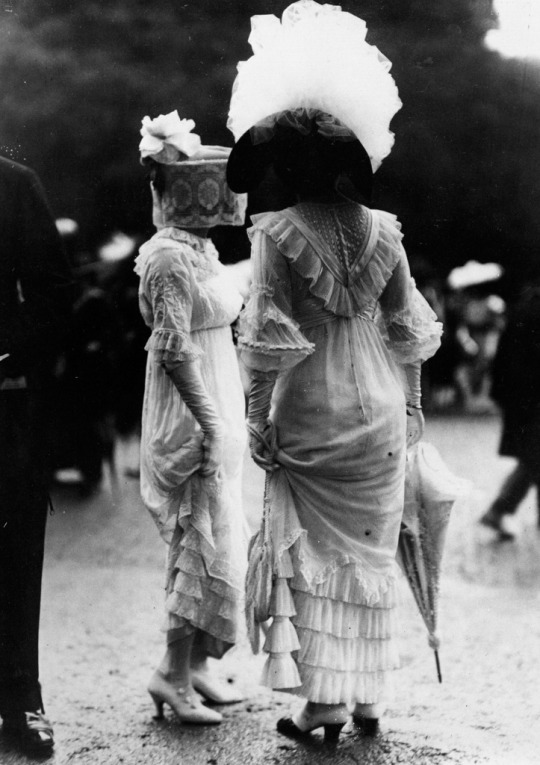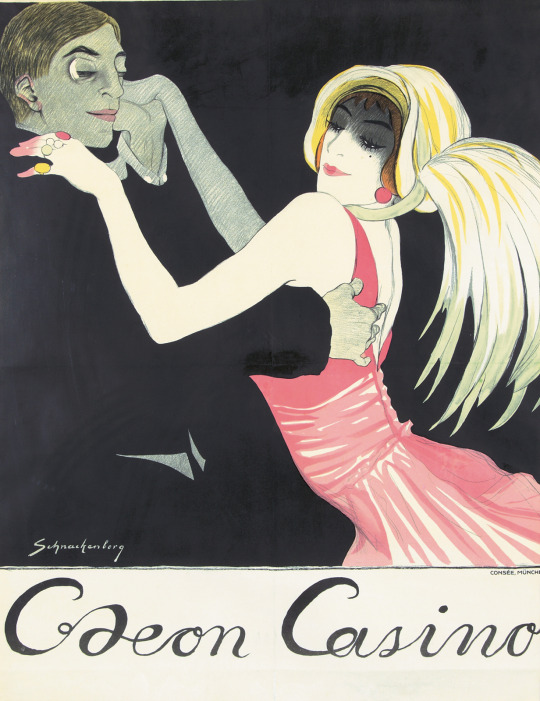Text









DR. MABUSE, THE GAMBLER Part I: The Great Gambler 1922 | Fritz Lang
157 notes
·
View notes
Text

Max ACKERMANN (1887-1975)
Woman at the gramophone - circa 1930
Crayon
Artcurial
22 notes
·
View notes
Text

ᴊᴇᴀɴɴᴇ ᴍᴀᴍᴍᴇɴ The Strategist. Watercolor and pencil, from Ulk magazine, November 1929.
49 notes
·
View notes
Text

Lesbian illustration by Paul Kamm, Berlin, 1932
From Der gestiefelte Eros: Lebensbeichte eines transvestitischen Schuhfetischisten (Eros in Boots: Confessions of a Transvestic Boot Fetishist) by Hanns von Leydenegg.
1K notes
·
View notes
Text

Albert Birkle
Berlin 1900 – 1986 Salzburg
"Lady in the open car". 1925
Oil on cardboard. 58.3 × 85 cm (23 × 33 ½ in.). Signed at the bottom left: A. Birkle Catalogue of works: The painting is listed in the digital catalogue of works by Albert Birkle von Roswita and Viktor Pontzen, Salzburg, under No. 1746. Framed
Grisebach
72 notes
·
View notes
Text

Elegant ladies strolling in lace dresses, Jardin du Luxembourg, Paris, Photo by the Seeberger brothers, 1900s
The Seeberger brothers have earned their places in history not just for their considerable photographic talents but for their roles in chronicling the evolution of styles, attitudes and cultural influences throughout their time. Their impact on fashion was considerable and the archives of their work continue to influence fashion today. (x)
120 notes
·
View notes
Text

Erich Ockert, Mädchenbildnis, 1927 Öl auf Leinwand, 47 x 40 cm
24 notes
·
View notes
Photo

Odeon Casino. 1912. Walter Schnackenberg.
34 ¼ x 45 in./87 x 114.3 cm
One of Schnackenberg’s finest creations, this couple exudes Art Deco style and sensuality. However, there is also something distinctly Germanic about the design – the eerie color palette, the self-satisfied superiority of the characters, a nod to the overly mannered, hyper-stylized social settings of the pre-Weimar period.
Available at auction October 30.
239 notes
·
View notes
Photo




Barbra Streisand in Funny Girl on Broadway in 1964
274 notes
·
View notes
Photo

Sommertag auf einer Berliner Dachwiese—das Radio sorgt für Unterhaltung (Summer day on a rooftop lawn, with a radio for entertainment), Berlin, 1926. Photographer unknown © 2005 bpk—Bildagentur für Kunst, Kultur und Geschichte, Berlin I’ve always been obsessed with images of women listening to records. My favorites are scenes from Fassbinder films. At the conclusion of his first feature, Love Is Colder Than Death (Liebe ist kälter als der Tod, 1969), a female gangster lies on the floor in a stark white bedroom in front of a turntable. The motif repeats in his 1975 television movie Fear of Fear (Angst vor der Angst). A housewife named Margot suffers from inconsolable postpartum depression. In the film’s climax, she locks her oldest daughter out of the apartment, lies on the floor, and blares a pop record. I recently finished making a film called Teenage about the birth of youth culture. In that process, I saw thousands of archival images, including this remarkable photograph of 1920s German teenagers listening to the radio on a green roof. The photographer is unknown, but I found the image in an incredible book called Wir wollen eine andere Welt (We want another world) by Fred Grimm. When Fred learned about my film last year, he sent me his book, and it hugely inspired me. In the early twentieth century, young people endured incredible oppression from their parents, governments, and the police. Pop culture and friends were their refuge, and teenagers struggled to create their own private world. This image is like a dream, and it conveys the transporting, hypnotic power of music.
The Collectors: Matt Wolf - Aperture Foundation NY
600 notes
·
View notes











